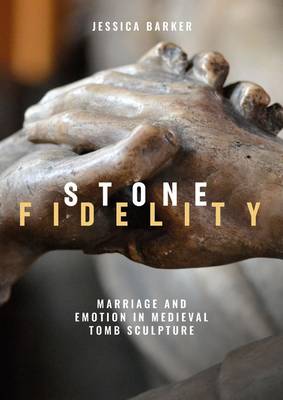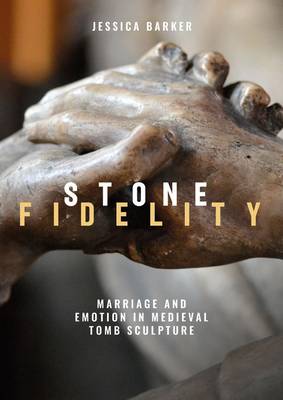
Je cadeautjes zeker op tijd in huis hebben voor de feestdagen? Kom langs in onze winkels en vind het perfecte geschenk!
- Afhalen na 1 uur in een winkel met voorraad
- Gratis thuislevering in België vanaf € 30
- Ruim aanbod met 7 miljoen producten
Je cadeautjes zeker op tijd in huis hebben voor de feestdagen? Kom langs in onze winkels en vind het perfecte geschenk!
- Afhalen na 1 uur in een winkel met voorraad
- Gratis thuislevering in België vanaf € 30
- Ruim aanbod met 7 miljoen producten
Zoeken
€ 153,45
+ 306 punten
Uitvoering
Omschrijving
Medieval tombs often depict husband and wife lying side-by-side, and hand in hand, immortalised in elegantly carved stone: what Phiilip Larkin's poem An Arundel Tomb later described as their "stone fidelity".
This first full account of the "double tomb" places its rich tradition into dialogue with powerful discourses of gender, marriage, politics and emotion during the Middle Ages. As well as offering new interpretations of some of the most famous medieval tombs, such as those found in Westminster Abbey and Canterbury Cathedral, it draws attention to a host of lesser-known memorials from throughout Europe, providing an innovative vantage point from which to reconsider the material culture of medieval marriage. Setting these twin effigies alongside wedding rings and dresses as the agents of matrimonial ritual and embodied symbolism, the author presents the "double tomb" as far more than mere romantic sentiment. Rather, it reveals the careful artifice beneath their seductive emotional surfaces: the artistic, religious, political and legal agendas underlying the medieval rhetoric of married love.
Published with the generous financial assistance of the Henry Moore Foundation.
This first full account of the "double tomb" places its rich tradition into dialogue with powerful discourses of gender, marriage, politics and emotion during the Middle Ages. As well as offering new interpretations of some of the most famous medieval tombs, such as those found in Westminster Abbey and Canterbury Cathedral, it draws attention to a host of lesser-known memorials from throughout Europe, providing an innovative vantage point from which to reconsider the material culture of medieval marriage. Setting these twin effigies alongside wedding rings and dresses as the agents of matrimonial ritual and embodied symbolism, the author presents the "double tomb" as far more than mere romantic sentiment. Rather, it reveals the careful artifice beneath their seductive emotional surfaces: the artistic, religious, political and legal agendas underlying the medieval rhetoric of married love.
Published with the generous financial assistance of the Henry Moore Foundation.
Specificaties
Betrokkenen
- Auteur(s):
- Uitgeverij:
Inhoud
- Aantal bladzijden:
- 354
- Taal:
- Engels
- Reeks:
Eigenschappen
- Productcode (EAN):
- 9781783272716
- Verschijningsdatum:
- 17/04/2020
- Uitvoering:
- Hardcover
- Formaat:
- Genaaid
- Afmetingen:
- 170 mm x 241 mm
- Gewicht:
- 997 g

Alleen bij Standaard Boekhandel
+ 306 punten op je klantenkaart van Standaard Boekhandel
Beoordelingen
We publiceren alleen reviews die voldoen aan de voorwaarden voor reviews. Bekijk onze voorwaarden voor reviews.









